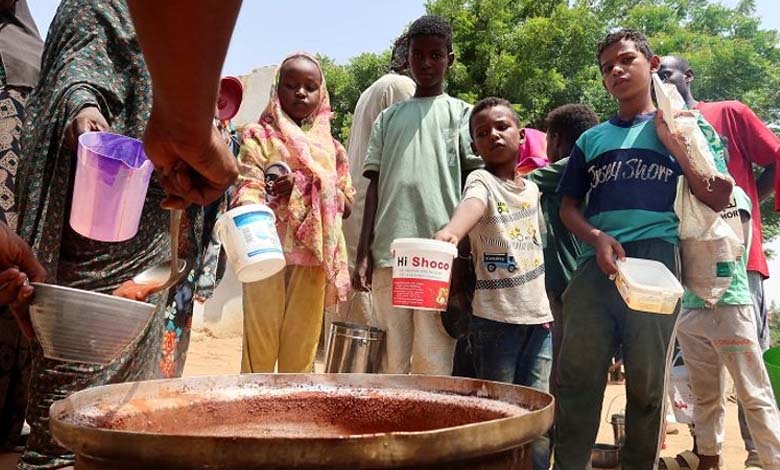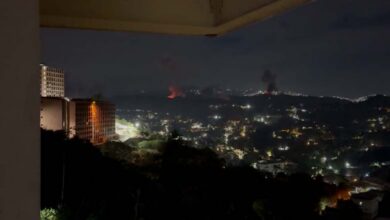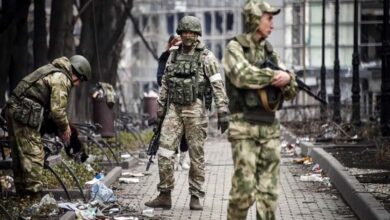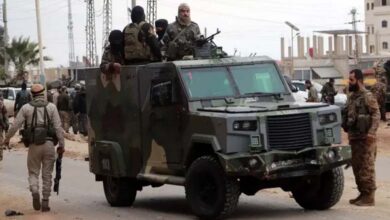War and Famine: Sudan’s conflict drives Darfur to the brink

The war in Sudan has left behind immense destruction, not only demolishing infrastructure but also claiming innocent lives through a famine that spares nothing and no one.
In the depths of the Sudanese desert, where wars rage incessantly and hunger devastates, dozens of people die daily. Displaced persons camps in Darfur have turned into mass graves, with thousands facing the specter of famine.
Thin children, desperate women, and hopeless men all beg for a morsel of food, while death looms over them from every side in a troubled world full of fears of being forgotten.
Analysts state that declaring a state of famine in Darfur represents a catastrophic failure of the international community, which has failed to end the conflict between the generals.
“There is a complete famine in Zamzam camp,” according to a report by the Famine Expert Committee on Thursday. This is only the third time a famine has been declared since the establishment of the internationally recognized standard twenty years ago, known as the Integrated Food Security Phase Classification (IPC), with the Expert Committee’s work linked to this standard.
According to experts and UN officials, classifying the country as a famine state may lead to a UN Security Council resolution that allows agencies to deliver relief across borders to those in need.
Zamzam camp, located south of the city of Al-Fasher, the capital of North Darfur state, houses nearly half a million displaced people.
According to the latest report by the Food Security Office on June 27, 25.6 million Sudanese suffer from severe hunger, including 755,000 people in a state of famine, with nearly 8.5 million others approaching this stage.
Food and Medicine Shortages
Adam Rajal, the official spokesperson for the General Coordination of Displaced Persons and Refugees, said, “Relief has not reached us since the outbreak of the senseless war on April 15; only a very small portion has arrived in rare cases. There is no food in any of the camps or even in the host communities.”
Rajal added: “Every day, between 20 and 25 people, including children, pregnant women, mothers, the elderly, and those with disabilities, die in Darfur’s displaced persons camps due to severe malnutrition, food shortages, and lack of medicine and treatment.”
He continued: “This dire situation is not only in Darfur but in most parts of Sudan. Food has been exhausted, the routes and passages for humanitarian aid are closed, and people did not plant in the last season due to security complications. Even a small amount of goods available in local markets is very expensive, and people have no cash to buy them.”
He added: “The UN Expert Committee should extend this situation in Zamzam camp to all other camps and areas in Darfur, as well as in the states of Kordofan, South Kordofan, Blue Nile, White Nile, Khartoum, Al-Jazira, and Kassala, among others.”
Children Dying of Hunger
“The announcement confirms what we have feared for months; after suffering the brunt of the conflict for over a year, children in Sudan are now dying from hunger,” said Plan International regarding the latest report on the Integrated Food Security Phase Classification and the declaration of famine for the first time in the world in seven years, at Zamzam camp in North Darfur.
“It is not too late to prevent the spread of famine to other parts of the country,” according to the World Food Programme on the famine in Zamzam camp, following the Integrated Food Security Phase Classification’s confirmation of the third global famine in twenty years and the first in seven years. They urge allowing safe passage for trucks and unrestricted access to hunger-stricken areas to save lives.
Abdullah Mansour, a local resident, said people die daily in Darfur from hunger, random shelling, or aerial bombardment.
Mansour said: “The warring sides must cease hostilities immediately without conditions to protect women and children.”
He added, “People have nothing to eat, and the rains have exacerbated the humanitarian disaster.”
Meanwhile, the Early Warning Network (a site for information and analysis on food insecurity) reported that Zamzam camp near Al-Fasher, the capital of North Darfur, is facing famine, with the possibility of famine in two other camps.
The network’s report stated that the Famine Review Committee of the Integrated Food Security Phase Classification confirmed that famine is currently ongoing in Zamzam camp.
The report also noted the potential for famine in Abu Shouk and Salaam camps, where limited evidence reduces the ability to confirm or deny its occurrence.
The report anticipated that the famine in the three camps would continue until at least October, with warnings that the crisis might extend beyond this month if food aid is not provided.
In response, citizen Manahil Hamad called on the UN, its agencies, and humanitarian organizations to increase their presence in Darfur to combat famine and food insecurity.
Hamad emphasized the need to open all humanitarian crossings and passages for aid delivery and to rapidly expand efforts to effectively respond and save millions of lives in Darfur.
She added, “Our children are crying from hunger and disease, and we can’t do anything.”
War Destroys Livelihoods
The war has destroyed the livelihoods of millions of Sudanese, including those working in agriculture and pastoralism, which employs 80% of the country’s workforce, due to its expansion accompanied by random attacks on civilians.
The war has worsened the humanitarian crisis in Darfur, especially in displaced persons camps, as the resulting clashes have disrupted the delivery of international humanitarian aid to the region.
Since mid-April 2023, the ongoing war in Sudan has caused the largest international humanitarian crisis, forcing people in Darfur to consume animal feed and tree leaves due to the lack of food in the 51 displacement camps across Darfur’s five states.
-
Why are the Muslim Brotherhood Trying to Prolong the War in Sudan? Politicians and Analysts Respond
-
One Year of Sudanese War: Displacement, Fighting, Diseases, and Deepening Humanitarian Crisis
The refugee camps in Darfur were established when people displaced from villages to large cities seeking safety after the outbreak of the war in the region in 2003 between government forces and armed rebel factions.
Since 2003, Darfur has witnessed armed conflict between government forces and armed rebel movements, resulting in approximately 300,000 deaths and the displacement of about 2.5 million others, according to the UN.
Since mid-April 2023, the Sudanese Army and the Rapid Support Forces have been engaged in a war that has resulted in approximately 15,000 deaths and more than 8 million displaced persons and refugees, according to the UN.












